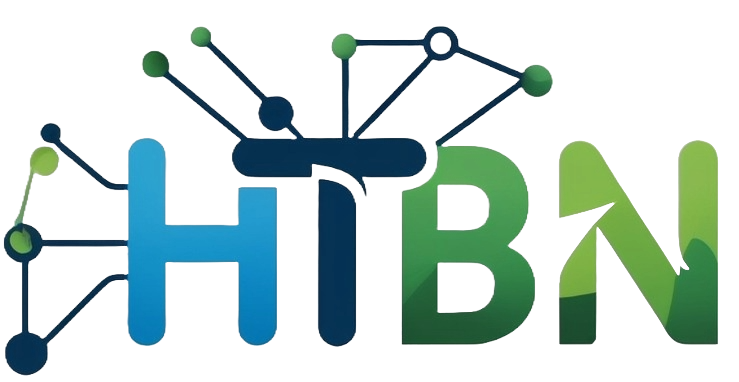Understanding the Ally Financial Plan
The Ally Financial Plan for nonprofit organizations offers a tailored financial solution designed to meet the distinctive needs of these entities. By facilitating access to various financing options, this plan enables nonprofits to effectively manage their resources while pursuing their mission-driven goals. One of the key features of the Ally Financial Plan is its flexibility, allowing organizations to adapt the financial structure according to their evolving requirements. This adaptability is essential for nonprofits, which often face fluctuating revenue streams and variable operational costs.
Another significant benefit of this financial plan is its emphasis on long-term sustainability. Nonprofits are frequently challenged by the need for ongoing funding and resource management. The Ally Financial Plan supports these efforts through prudent financial management principles, encouraging organizations to invest wisely in their programs and initiatives. By offering financial tools that promote careful budgeting, forecasting, and strategic planning, the plan ensures that nonprofits can navigate financial uncertainties successfully.
Moreover, the Ally Financial Plan aligns with the best practices of financial stewardship. Trustworthiness and transparency are critical in the nonprofit sector, and this financial instrument supports these attributes by advocating for responsible financial habits. This alignment not only helps organizations enhance their credibility with donors and stakeholders but also builds a strong foundation for operational success.
In areas such as cash flow management and capital expenditure planning, the Ally Financial Plan for nonprofit organizations plays a crucial role. By addressing specific challenges faced by this sector, it fosters an environment conducive to growth and impact. Ultimately, the adoption of the Ally Financial Plan enables nonprofits to focus more on their mission while confidently managing their financial future.
Benefits of the Ally Financial Plan for Nonprofits
The Ally Financial Plan for nonprofit organizations provides numerous advantages that can greatly enhance their operational capabilities and financial stability. One of the foremost benefits is improved financial stability. By offering specialized financial services and resources, nonprofit organizations can better manage their cash flow, enabling them to maintain consistent funding for projects and initiatives. This financial fortitude is crucial for nonprofits, which often rely on donations and grants that can fluctuate significantly from year to year.
Moreover, the Ally Financial Plan is designed to provide access to tailored financial resources. Nonprofit organizations often face unique challenges compared to their for-profit counterparts, and the Ally plan understands these distinct needs. With customized services such as grant management tools and donor engagement strategies, nonprofits can efficiently allocate their resources and maximize their fundraising efforts. These tailored tools not only streamline financial operations but also play a crucial role in long-term sustainability.
Enhanced budgeting and planning capabilities constitute another significant advantage of the Ally Financial Plan for nonprofits. With robust budgeting tools and financial forecasting resources, organizations can set realistic goals and track their progress. This enables nonprofits to make informed decisions regarding resource allocation and project prioritization. For instance, implementing the Ally Financial Plan has allowed nonprofits like XYZ Charity to analyze their financial health meticulously, resulting in a 20% increase in fundraising efficacy within two years.

In conclusion, the Ally Financial Plan for nonprofit organizations offers a multitude of benefits, from improved financial stability to tailored financial resources and enhanced budgeting capabilities. Real-world examples demonstrate that nonprofits leveraging this financial plan can significantly enhance their operational efficiency and mission fulfillment, leading to a stronger impact within their respective communities.
Implementing the Ally Financial Plan: Steps for Nonprofits
Implementing the Ally Financial Plan for nonprofit organizations involves a structured approach that ensures financial stability and enhances mission fulfillment. The first crucial step is conducting preliminary assessments to evaluate the current financial state of the organization. This includes analyzing revenue sources, expenditure patterns, and overall financial health. By understanding these metrics, nonprofits can identify strengths and weaknesses, which aids in informed decision-making moving forward.
Setting financial goals is the next key aspect of this process. Nonprofits should develop clear, measurable objectives that align with their mission. These goals may include increasing revenue from grants, reducing operational costs, or establishing a reserve fund for emergencies. By clarifying financial aspirations, the organization can create a focused path towards achieving its objectives within the ally financial plan for nonprofit organizations.
Stakeholder engagement is also vital during the planning phase. Engaging board members, staff, volunteers, and potential donors can provide varied perspectives and foster a sense of ownership in the financial plan. Regular communication through meetings or workshops helps align the broader organizational vision with specific financial targets, ensuring that all parties are invested in the implementation process.
Following these foundational steps, nonprofits can proceed to practical applications such as budget creation and resource allocation. Creating a detailed budget that reflects the financial goals set earlier will guide expenditures and income expectations. Additionally, nonprofits should regularly assess resource distribution to ensure that funds are utilized effectively in line with their strategic priorities.
Finally, continuous monitoring and evaluation of the financial plan are critical. This involves regular reviews of financial performance against the established goals and making necessary adjustments based on changing circumstances. Through periodic assessments, nonprofit organizations can ensure that their ally financial plan remains relevant and effective in supporting their mission.
Challenges and Solutions in Adopting Ally Financial Plan
The adoption of the Ally Financial Plan for nonprofit organizations presents various challenges that must be addressed to ensure successful implementation. One of the primary obstacles is resistance to change among staff and stakeholders, as they may be accustomed to existing financial management systems. This resistance can stem from a fear of the unknown or a lack of understanding of how the new plan could be beneficial. To mitigate this challenge, organizations should engage in open discussions about the advantages of the Ally Financial Plan, emphasizing improvements in financial transparency and efficiency.
Another significant challenge is budgeting constraints that many nonprofits face. The financial resources available for implementing new systems can be limited, resulting in hesitation to adopt comprehensive plans such as the Ally Financial Plan. To address this, organizations can explore partnerships with financial consultants or organizations that offer grants specifically for this purpose. By securing external funding or assistance, nonprofits can overcome budgeting barriers and invest in essential training and resources.
Furthermore, varying levels of financial literacy among staff can hinder the effective adoption of the Ally Financial Plan. Understanding complex financial concepts is crucial for successful implementation. Therefore, nonprofits should prioritize training programs tailored to the staff’s diverse learning needs. Workshops conducted by financial experts can enhance the overall knowledge base and instill confidence in using the plan. Moreover, leveraging community partnerships can provide additional resources and expertise to further support staff development.
In conclusion, while adopting the Ally Financial Plan for nonprofit organizations may present several challenges, there are practical solutions to navigate these obstacles effectively. By fostering open communication, exploring funding opportunities, and investing in staff training, nonprofits can successfully implement the Ally Financial Plan, enhancing their financial management and operational efficiency.

